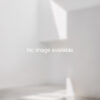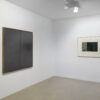Seoul – Pace is pleased to present Correspondence: Lee Ufan and Mark Rothko, a two-artist exhibition curated by Lee Ufan in collaboration with the Rothko family, at its Seoul gallery.
On view from September 4 to October 26 and coinciding with Frieze Seoul, the show will span two floors of the gallery, bringing a suite of paintings from Lee’s Dialogue and Response series, made between 2018 and 2023, into conversation with major works by Mark Rothko from the 1950s and 1960s.
Born in 1936, Lee Ufan was a leading figure of the Japanese avant-garde group Mono-ha in the late 1960s. His artistic practice, which emphasizes the relationships between space, perception, and object, developed from his deep appreciation for nature and materiality. Rothko, a pioneer of the New York School, is one of the most influential artists of the 20th century, known for his Color-field paintings of immense scale that are imbued with psychological and spiritual import. While each artist’s work will be given a dedicated space and presented separately in the upcoming show in Seoul, the exhibition will draw out the many resonances and intersections—in terms of color, surface, and atmosphere—that cut across both artists’ work.
The paintings of Rothko have long been celebrated for their ability to summon the sublime powers of color, dissolving fields of pigment into expanses of radiant atmosphere. Color is equally potent in Lee’s paintings, though it often emerges as a frozen gesture, in contrast to Rothko’s gesture-less surfaces. If Rothko’s indecipherable application of paint evokes the scumbles and fogs of late Titian—flooding the entire canvas and erasing any sense of line or hard contour—Lee’s forms are comparatively crisp and self-contained. Yet both artists use color as a locus for eliciting a deeply contemplative state in the viewer, and both deal with the aesthetics of air, emptiness, and vapor in their work, investigating painting’s capacity to intensify our experience of color and to produce an effect that is at once awesome and meditative, conveying both power and quiescence.
The text was provided by the gallery.



